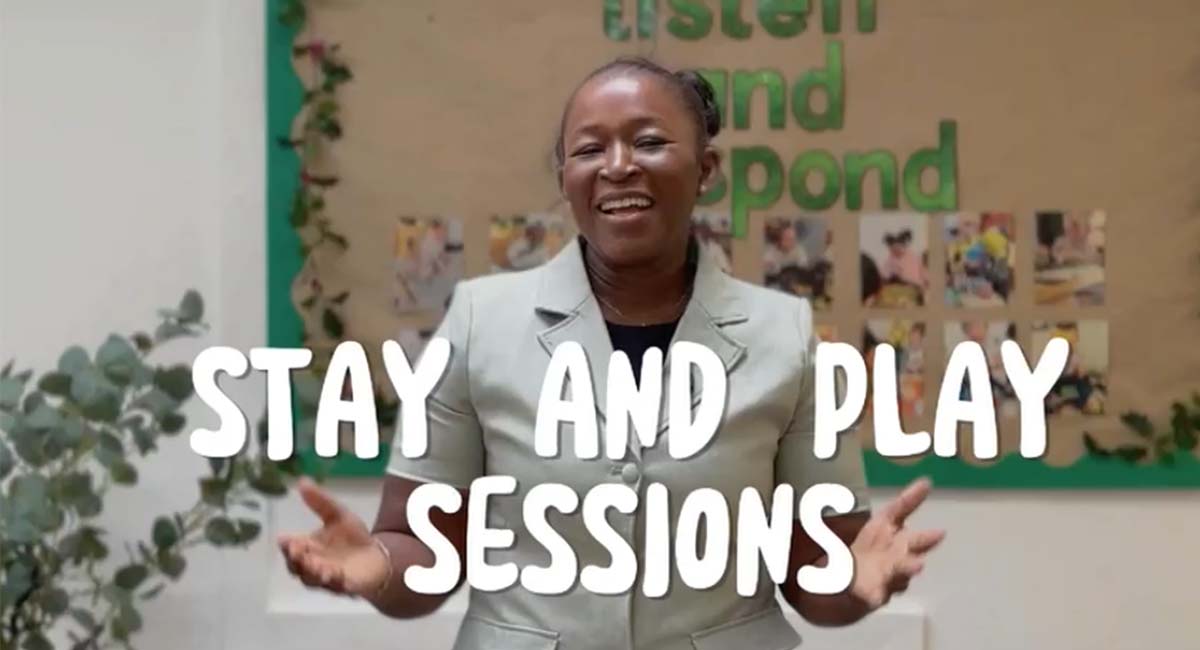30 Hours Free Childcare: Key Benefits & Eligibility
Discover the transformative benefits of 30 hours free childcare for UK working families. Learn how it reduces childcare costs and supports work-life balance efficiently.
1. Benefits of 30 Hours Free Childcare
Navigating childcare options can be challenging for working parents. The 30 hours free childcare scheme offers a valuable solution. It provides up to 30 hours of free childcare per week.
This initiative is designed to support working families. It helps reduce the financial burden of childcare. Parents can focus on their careers without worrying about high costs.
The scheme is available for children aged 3 and 4. It aims to make childcare more affordable and accessible. This support is crucial for parents balancing work and family life.
Understanding eligibility and application processes is essential. Many parents are unsure how to access these benefits. This guide will clarify the steps involved.
We will explore the benefits of the scheme. Learn how it can support your family. Discover how to apply and make the most of this opportunity.
2. What Is the 30 Hours Free Childcare Scheme?
The 30 hours free childcare scheme is a government initiative in England. It aims to assist working parents by reducing childcare costs. This scheme provides up to 30 hours of free childcare weekly for 38 weeks a year.
This initiative targets families with children aged 3 and 4 years old. It allows parents to save money on childcare and enables them to work more hours or maintain their current job. The scheme is not available during school holidays unless childcare providers offer a stretched offer to cover additional weeks.
To gain a better understanding, here are the key aspects of the scheme:
✔️ Available for children aged 3 and 4
✔️ Provides up to 30 free hours per week
✔️ Covers 38 weeks per year
✔️ Not available during school holidays unless extended
✔️ Aims to support working families
The scheme was introduced in September 2017. It represents a significant support measure for many families. Since its inception, it has helped countless parents manage work and family obligations more effectively.
Understanding this program can help families make informed childcare decisions. It is a key part of the UK government’s efforts to make childcare more affordable.
3. Who Is Eligible for 30 Hours Free Childcare?
Eligibility for the 30 hours free childcare scheme depends on several factors. Both parents must be working, or the sole parent in a single-parent family must be employed. They need to earn at least the National Minimum Wage for 16 hours a week.
Children must be either 3 or 4 years old when the term starts. This helps ensure they benefit from structured learning and play before school begins. There is an upper income limit as well, where neither parent should earn more than £100,000 a year.
Parents using the scheme must reconfirm their eligibility every three months. This ensures continued access to the free childcare hours. Additionally, the program is separate from the 15 hours universal entitlement for 3 and 4-year-olds, which any family can use.
Here’s a simple checklist for eligibility:
✔️ Working status for both parents or sole parent
✔️ Earnings meet minimum wage for at least 16 hours a week
✔️ Child aged 3 or 4 years old
✔️ Each parent earns under £100,000 per year
✔️ Reconfirmation every three months is required
Understanding these criteria helps parents determine their standing. It’s important to plan ahead and apply the term before the child turns three. This ensures all paperwork is in order, preventing delays in receiving the free hours.
4. How Does 30 Hours Free Childcare Work?
The 30 hours free childcare scheme offers significant financial relief. Eligible parents receive up to 30 hours of free childcare each week. This coverage lasts for 38 weeks a year, aligning with the school term.
Parents can choose from a range of childcare providers. These include nurseries, childminders, and even school-based settings. The flexibility allows families to select what’s best for their schedule and needs.
Notably, the scheme is designed to be accommodating. It can be split among multiple providers if needed. This feature is beneficial for parents utilizing different childcare options.
The hours provided can adjust to fit diverse work patterns. Providers may offer flexible packages that cater to varied schedules. Parents should discuss these options directly with their chosen providers.
Here is how the scheme works in summary:
✔️ Provides 30 hours free per week, for 38 weeks
✔️ Available at nurseries, childminders, or schools
✔️ Can be split across multiple providers
✔️ Adjusts to match work routines
✔️ Must reconfirm every three months
Understanding these aspects helps parents efficiently use the scheme. It empowers working families to balance employment with parenting effectively.
5. How to Apply for 30 Hours Free Childcare
Applying for the 30 hours free childcare scheme is straightforward. The process begins online at the Childcare Choices website. This platform guides parents step-by-step through the application.
First, you need to set up an account. This involves entering personal details to create your user profile. Once completed, you’ll navigate to the appropriate application form.
You’ll need to provide proof of eligibility. This includes employment information and income details. The government uses this data to confirm your qualification for the scheme.
It’s crucial to apply in advance. Ideally, start the application the term before your child turns three. This timing ensures that you receive the free hours promptly.
Here’s a simple checklist to help you:
✔️ Create an account on the Childcare Choices website
✔️ Submit your employment and income details
✔️ Confirm your eligibility status every three months
✔️ Start the process early to avoid delays
Finally, remember that communication with your chosen provider is key. They can help integrate the free hours into their offerings smoothly. This collaboration is essential for maximizing your childcare benefits.
6. 15 Hours Free Childcare vs. 30 Hours Free Childcare
Understanding the difference between the 15 and 30 hours free childcare options helps parents make informed decisions. Both schemes aim to support early childhood education. However, they cater to slightly different needs and eligibility criteria.
The 15 hours free childcare is universally available. This means it applies to all 3 and 4-year-olds, regardless of parents’ working status. Every child in this age range can access early education without cost.
In contrast, the 30 hours free childcare benefits working families. Both parents must work and earn the national minimum wage or more to qualify.
Here’s a quick comparison to illustrate the key differences:
✔️ 15 Hours: Universal, requires no employment check, available for 3 and 4-year-olds.
✔️ 30 Hours: Only for working parents, employment and income checks required, only for 3 and 4-year-olds.
Parents should assess both options carefully. Understanding the criteria ensures they maximize the available childcare benefits.
7. Free Childcare for 2-Year-Olds: Who Qualifies?
Free childcare for 2-year-olds is less widely available than for older children. However, some families can benefit from this support. Understanding the qualifications is crucial for parents of younger children.
Typically, free childcare for 2-year-olds is means-tested. Families must meet certain income or government assistance criteria. This ensures support goes to those who most need it.
Eligibility often includes families receiving specific benefits. These might include Income Support, income-based Jobseeker’s Allowance, or Universal Credit. Other criteria can also apply, such as children with additional needs or disabilities.
The following criteria outline eligibility:
✔️ Families receiving Income Support or Jobseeker’s Allowance.
✔️ Children with a current Education, Health and Care Plan.
✔️ Children who are looked after by the local authority.
It’s advisable for parents to check with local councils. Understanding specific requirements helps in accessing this assistance for eligible families.
8. When Do Free Childcare Hours Start and Stop?
Free childcare hours begin when a child reaches the qualifying age and parental criteria are met. For 3-year-olds, this typically starts the term after their third birthday.
It’s important for parents to apply in advance. This ensures they don’t miss out on free hours when eligible. The process is straightforward, but timing is key.
The exact start and stop times depend on various factors. These include the child’s birth month and the local authority’s academic calendar. Generally, care is provided during term time.
Here’s a simple breakdown of the start times:
✔️ Spring term starts on January 1st.
✔️ Summer term starts on April 1st.
✔️ Autumn term starts on September 1st.
The childcare hours stop when the child begins primary school. Knowing these timelines helps parents plan effectively. Staying informed ensures continuous support throughout early childhood.
9. Using Your Free Childcare Hours: Flexibility and Options
The 30 hours free childcare scheme offers significant flexibility. Parents can choose how to allocate these hours. This is particularly helpful in balancing work schedules and childcare needs.
Childcare providers vary in what they offer. Options include nurseries, childminders, and school-based settings. Parents can even split their hours across multiple providers if desired.
The scheme allows for various arrangements. This depends on the provider’s capabilities and availability. For instance, some providers offer “stretched” services. This option spreads hours across the entire year, including holidays.
Here’s how flexibility can work for you:
✔️ Use all 30 hours during term time.
✔️ Split the hours across the week to cover peak needs.
✔️ Opt for stretched hours that cover the entire year.
The flexibility of this scheme offers relief to many families. By communicating with providers, parents can find the best fit for their unique situations. This adaptability supports both childcare and personal commitments.
10. Additional Costs and What’s Not Covered
While the 30 hours free childcare scheme reduces expenses, not everything is free. Parents need to be aware of potential additional costs. Understanding these helps in budgeting effectively.
Certain expenses are not covered by the scheme. Meals, snacks, and specific activities might incur extra charges. These costs vary by provider, so it’s important to inquire ahead of time.
Other possible charges could include:
✔️ Special events or outings fees.
✔️ Premium clubs or services.
✔️ Equipment or materials required for certain activities.
These additional costs are important to consider. It’s essential to clarify with your provider what is included. This ensures there are no unexpected expenses when using your childcare hours.
11. Key Benefits for Working Parents
The 30 hours free childcare scheme offers numerous advantages for working parents. Financial relief is a significant benefit, as childcare costs can be substantial.
Flexibility is another key aspect of the scheme. Parents can balance work and family life more effectively. The ability to choose different childcare providers enhances this flexibility.
Aside from cost and flexibility, other benefits include:
✔️ Support to return to or increase work hours.
✔️ Opportunity for children to socialize and learn.
✔️ Improved work-life balance for families.
Additionally, parents find peace of mind knowing their children are in safe environments. This assurance allows them to focus on their work responsibilities. The scheme’s design caters to varied family needs, making childcare more accessible and affordable. These benefits collectively offer invaluable support to working parents across the UK.
12. Common Questions About 30 Hours Free Childcare
Parents often have queries about the 30 hours free childcare scheme.
Understanding eligibility and application processes are common concerns. Clear answers can simplify these concerns.
Here are some frequently asked questions:
✔️ How do I claim the 30 hours free childcare?
✔️ When does 30 hours free childcare begin?
✔️ What happens if circumstances change?
Parents also wonder about combining this scheme with other benefits. It’s possible to use in tandem with tax-free childcare support. Reconfirming eligibility every three months is crucial.
Answers to these questions help parents make informed decisions. Effective use of this scheme depends on understanding all details clearly. Exploring the government’s Childcare Choices website provides additional resources and guidance.
13. Tips for Making the Most of Free Childcare
Maximizing the 30 hours free childcare scheme requires strategic planning. With a few tips, parents can effectively utilize available resources. Aligning childcare hours with work schedules boosts efficiency.
Consider these tips for optimal use:
✔️ Communicate with providers to understand available options.
✔️ Reconfirm eligibility on time to avoid disruptions.
✔️ Explore additional funding options for extra support.
Flexibility in using the hours can greatly benefit families. Split the hours across multiple providers to suit different needs. This approach can enhance your child’s experience.
Staying informed is critical. Regularly check for updates or changes in the scheme. This vigilance ensures continued access to free childcare without issues.
Conclusion: Why 30 Hours Free Childcare Matters
The 30 hours free childcare scheme plays a crucial role for UK families. It helps reduce the financial stress of childcare, providing substantial support to working parents. This scheme enables more parents to remain in the workforce.
Moreover, the program promotes early learning opportunities for children. By making childcare more affordable, it opens doors to quality early education for many children. These benefits extend well beyond immediate monetary savings.
Ultimately, this initiative supports both family well-being and the economy. By helping parents juggle work and family life, it fosters a more balanced lifestyle. The scheme remains an essential resource for many UK households.










